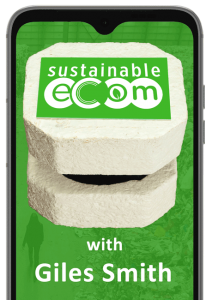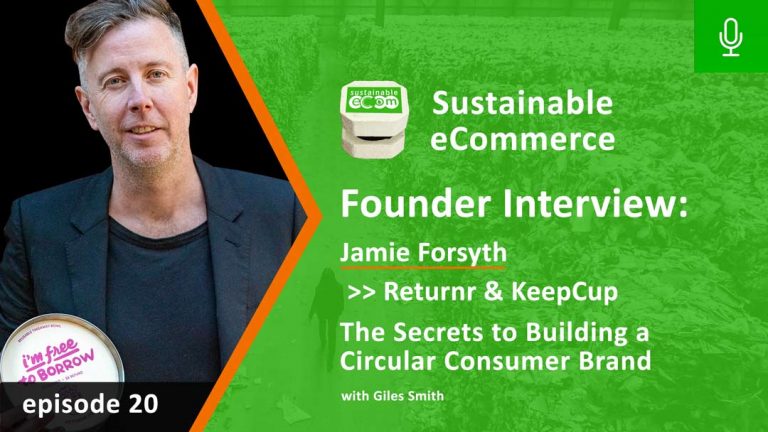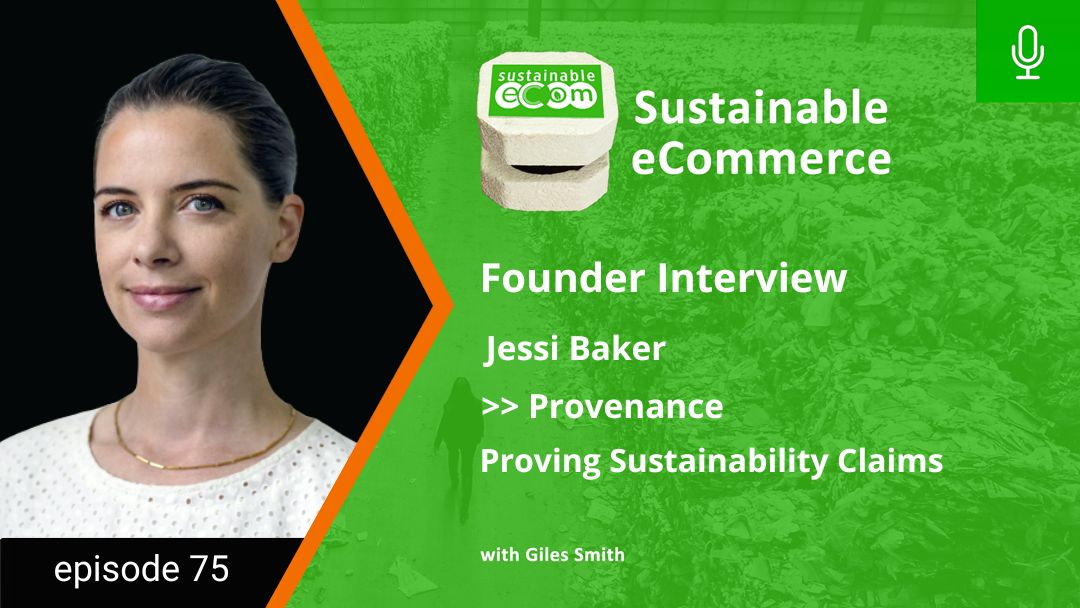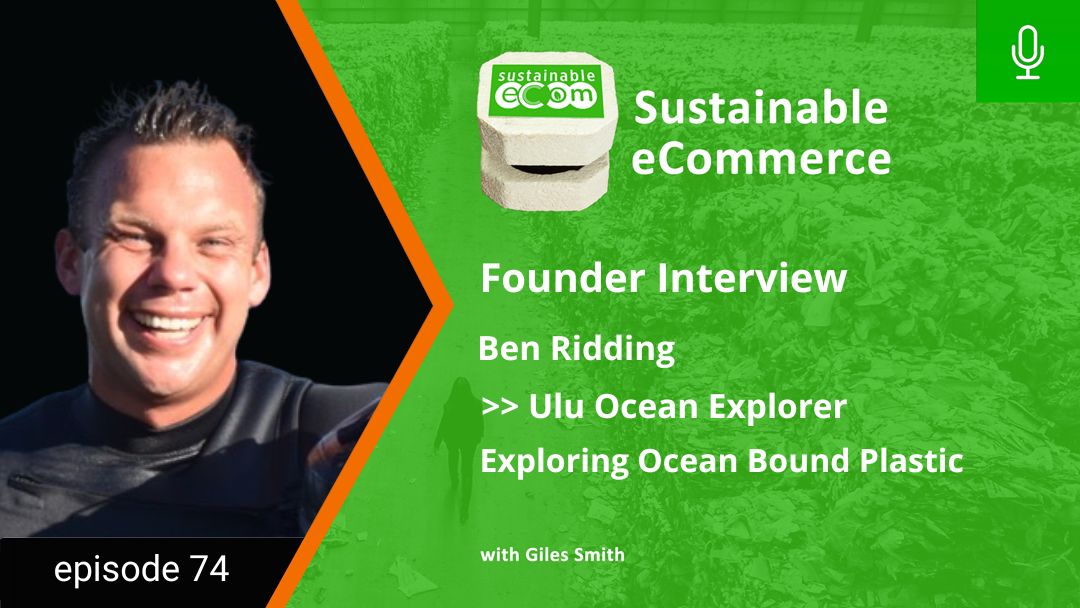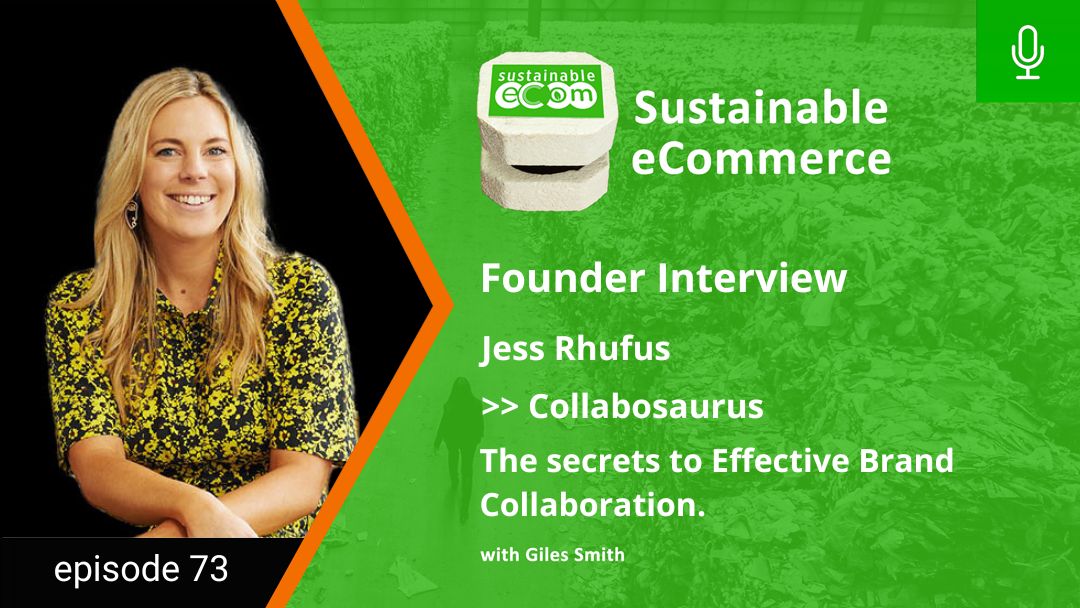Welcome to Episode 20 of the Sustainable Ecommerce Podcast!
Reflecting back on the past few years of interactions with brand founders especially some of the guests we’ve had on this show, I’ve become more & more convinced that re-use and circularity represent the best model for sustainability.
In fact, I’ve come to believe that business models that work in this way are actually heralding in a completely new era of ecommerce.
My guest today can only be described as Australia’s pioneer of re-use. Jamie Forsyth is the Co-Founder of Keep Cup, which was the brand that basically started it all when it comes to re-usable coffee cups, back in 2009.
He’s now building another circular consumer brand in the grocery category called Returnr and I could not think of a more experienced person to come and chat with us on this topic.
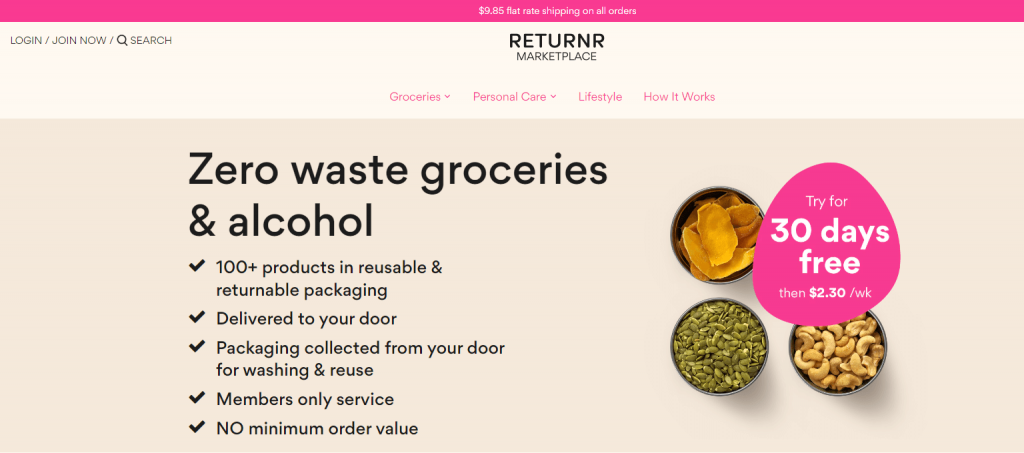
Giles Smith: Jamie Forsyth, welcome to the show!
Jamie Forsyth: Thanks for having me!
Giles Smith: What an honour to have luminary in the sustainability space in Australia! Can you tell us a little bit about the story of both of KeepCup and Returnr and how you came to get going?
Jamie Forsyth: The journey starts back in 2008 when my sister Abigail and I started a cafe business. We were using hundreds of thousands of paper coffee cups, and we wanted to do something about that. We looked around the world for something that we could bolt into our business and there wasn't really anything available.
So we went on the journey to design product that would be fit for purpose. Where people could basically buy and then reuse the cup. Now at the time we were pretty uncertain about whether it could work. It was a big behavior change to ask people to effectively buy something and then wash it and bring it back into a cafe for reuse.
I think the problem was there, the fact that there were billions of paper coffee cups being made and landfilled, but it was really just around whether people would do that action. Most people didn't think they would, but it turns out we did tap a vein of conscious consumerism.
That was a global phenomenon, we were at a time in that business where Instagram was just launching, coffee in Melbourne was seen as a hot trend. So a lot of people were watching what local roasters were doing and cafe culture is heavily networked. Everyone sort of knows the story from there, but it was a long, slow climb. Abby told me the other day that on a Per annum basis, KeepCup prevents the production consumption of about 9 billion paper coffee cups a year. So, the number is huge and you know, we're proud of the achievement of building that business.
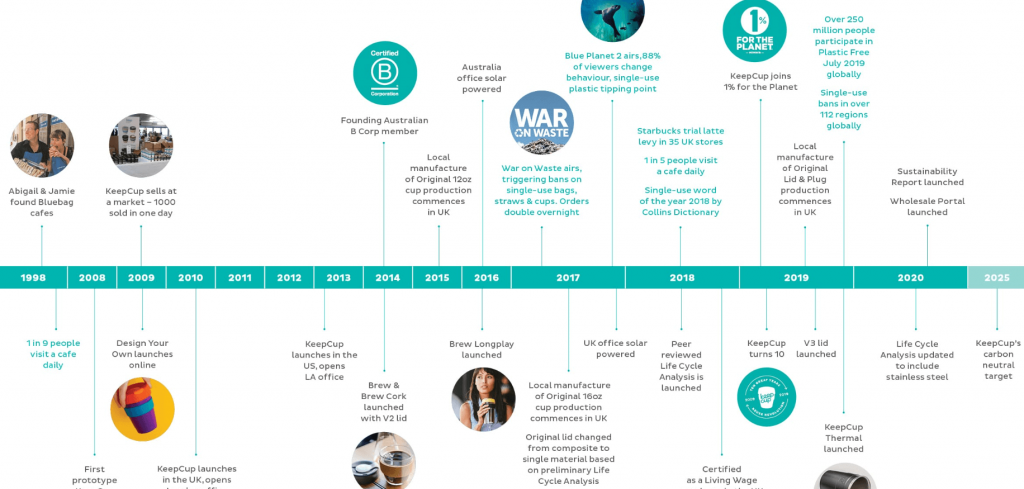
Giles Smith: Congratulations, that's an amazing achievement!
Jamie Forsyth: Thank you. It's a ripping brand and it's built by the people and it was fantastic to go on that journey with KeepCup.
Probably now with experience in hindsight, KeepCup has a model that is probably the gold standard of how you would create a sustainable product. And that is that essentially the KeepCup gets its value from the consumer buying that product. And then the user takes responsibility for the waste that they create. They wash the cup, they take it in, they choose the brand and the product because they like it. And it's fit for purpose. We agonized over the design and everything.
I think it's important to note that the user takes responsibility for, the washing and the risk and all those sorts of things. It's not pushed back to supply chain. That creates a pull demand. It's you as a customer requesting from your supplier that you want it in a format, which is sustainable. That is very powerful.
The Achilles's heel of that is it’s unique to something like coffee because around the world everyone uses the same size cups. So it could immediately bolt into what is a massive market.
With Returnr, it has different challenges, some of which are diabolical. It works in spaces around food service and grocery. The range and the needs within the design are verging on endless. So having an ownership model product where the customer owns it and basically brings it in to be reused is not possible because the variety and the modularity of the product is unobtainable because there's too many trade-offs.
In my view, re-use is the only way to true sustainability. Returnr works in the grocery space where we deliver grocery products in our re-usable containers, bowls, cannisters etc. It’s effectively a borrow system, so you don’t own it. It's described most often as products-as-a-service. You buy the contents, and keep it in the container. When you’re done, you put the container in the return tote and that gets collected when your next order is delivered.
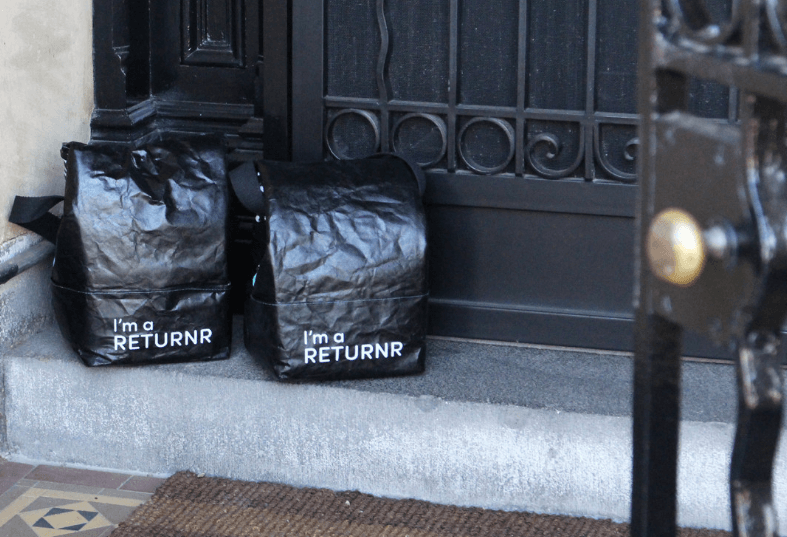
Giles Smith: Interesting how different those two businesses actually are. What are the key lessons that you took out that you think are really powerful that people should take note of and they could deploy in their own business?
Jamie Forsyth: Well, what I would say is that the, the model in some ways involves a of behavior change. Which is the most challenging aspect of any type of business – getting people to understand what it's about.
KeepCup seems simple now, but when I would explain to people what it was, people looked baffled, and would often be reluctant to take it into a cafe and ask a barista to fill it. But, you can see how the world's turned. Now it seems like quite normal behavior to do that.
You have to provide a better solution for them that is in every way superior to single use, because you can't in the long term rely on people's good graces around them trying to do the right thing. It's got to be more than that. You've got to deliver more.
The commercial reality of re-use is that every time we re-use something, that’s value that would otherwise have popped out. So if you are using, let's say a single use bowl, and that bowl costs 50 cents. Every time a bowl is reused or a cup is reused or whatever it is that 50c value pops out for someone to grab. The customer can grab it, the supplier can grab it, we can grab it. That's how we attempt to create the value.
In terms of the products we design, what we chase down is sort of three things: First, environmentally problematic products. For example, polystyrene ice cream container, or maybe a bag for coffee beans, which are made up of multiple layers of products. That's the first thing we look for.
The second thing we look for is high value. So like a coffee bag or a polystyrene ice cream container, they cost upwards of a dollar. So there's value that can be captured there.
Then the third thing is something that we can add design to, to make the experience of using it better. So it might be a different type of opening or maybe a different type of lid or insulation or those types of things that makes the user experience better and superior to the single use product, because that's what will keep people on the platform and using it.
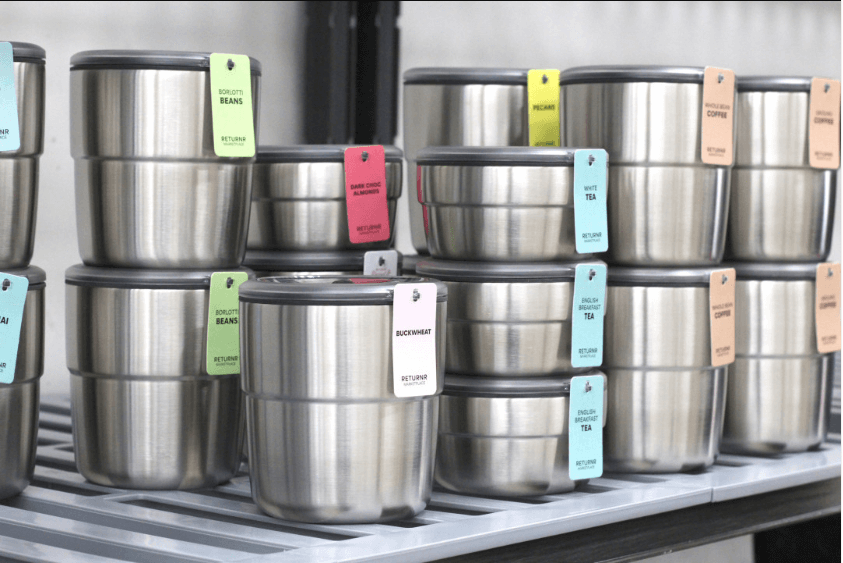
Giles Smith: What do you think is more important to the consumer for where we are in 2022 – is it the benefits of the functionality or the benefits of sustainability?
Jamie Forsyth: I would say that the minimum buy in is you need to deliver on your brand promise. So like in returners case, our brand promise is that we don't use any single use items within anything you buy from us. And everything is reusable.
But it's not enough to win and get customers. We need to deliver more than that. So we don't create our own product. Often, we're trying to partner with people. Basically, what we are doing is getting their products in reusable containers, which is something they want as brands too. That is also something that has brand presence from the end consumers point of view. You are looking for familiar brands.
The other part is, is that we try and make the experience of how you use it in your home better. So when you buy our products, you don't decant them out into anything else. They've got a really sexy labelling system so you can organise your pantry.
Then probably the final part of it is that we do design our own containers and we do agonize over them to try and make them functional, beautiful, et cetera.
There's been so much talk over the last few decades around recycling, which I consider to be pretty much useless. For example, glass is recyclable, but it gets turned into road base in Australia. When you use a glass jar, you need another glass jar. You don't need road base. I think that direct replacement can only happen through reuse.
Giles Smith: Yeah, I one hundred percent agree with everything you just said. So, are you sending the suppliers your containers and they're filling it and sending it back to your warehouse, or are they sending it to you in bulk and you are decanting when you get an order? Our preferred
Jamie Forsyth: Our preferred method is that we send them containers and they fill them. I'd probably say around half of the suppliers on Returnr marketplace do it that way. And the other half we buy in bulk and then we pack down.
The way in which Returnr marketplace works, it has to work with very localized suppliers, which is something that I like personally, supporting local businesses and local brands, but it also works well from a logistical point of view because what kills most attempts at reuse systems is the cost of that logistics.
So how our model basically works from an end-user point of view is every delivery is a pick up. And that's also true from the supply side. Every time they deliver coffee in a canister, we give them the empties ready for the next time we place an order. So it's basically just cycling round.
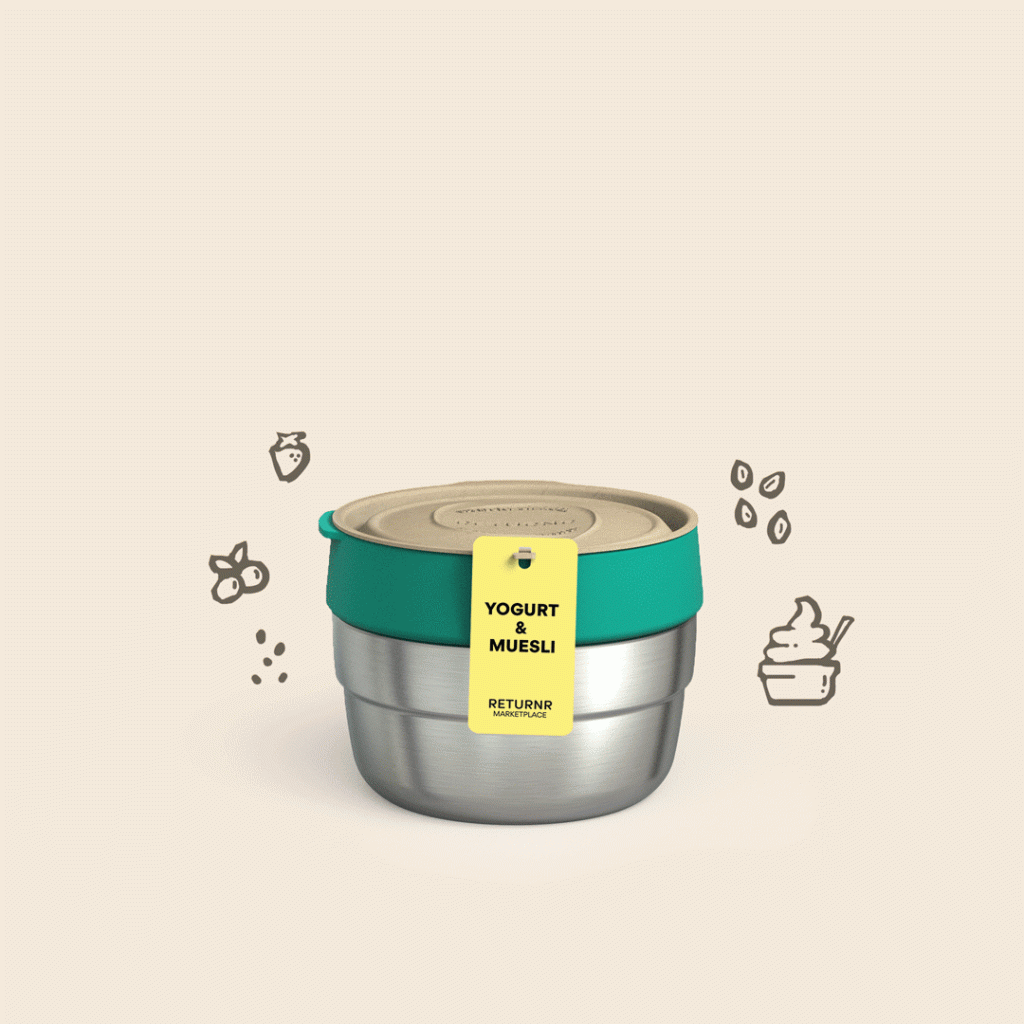
Giles Smith: Have you found great partners to work within that space? And is there anyone you can recommend that will actually do this and work on this kind of reversal logistics basis?
Jamie Forsyth: Well effectively, that's what we offer to most of our supply chain. There's loads of businesses out there that are forced to do what I would call straddling. They offer both coffee beans in a canister that's reusable and returnable, and then on the same shelf they have coffee that's in a single use coffee bag. That’s a very confusing proposition to the customer.
But at Returnr, we’re all in. Customers just wouldn’t buy from us if they are not interested in the benefits of re-use. That means that for brands that want to do something like this, they only have to talk to us and we will create not only the re-usable container, but sales frontage (on the store), plus we provide the return logistics for them.
Giles Smith: So, have you built a fleet of vehicles or something to do all the logistics?
Jamie Forsyth: No, Returnr handles design and engineering the container products. We build the customer base. We keep a ledger of what you have as a user. So, we manage that part of it, and we also do the washing of the returned containers. Then the actual picking, packing shipping is done by a third party, who is also one of our partners on the platform. They provide all that warehousing, the last mile logistics and the picking up of products for us, because they're more of an expert in that area.
Giles Smith: Would it be fair to say that your suggestion would be not go with the big delivery organizations, like DHL, Aus Post etc, but instead partner with somebody that's already kind of got this reverse logistics happening as part of their business model, and work together to make it more efficient for both of you?
Jamie Forsyth: I would recommend what we have done. In terms of the delivery, it does not go out to a third party. It basically goes within that same loop. So, there's not a hub and spoke type thing. It goes directly from that warehouse to that customer. That makes things manageable. The only problem with that is that it does limit you geographically.
When you are relying on third parties like DHL and Sendle, it becomes more difficult because they will use a hub and spoke style thing. The driver that's going out to the customer is not necessarily coming back to same hub. So the question is, is how do you get that product back. In the end they are likely to charge you effectively for two deliveries, and at that point the unit economics can't work.

Giles Smith: Where are three places you think brands should start when thinking about re-use and circularity?
Jamie Forsyth: Start with packaging that is high value. Choose items that are also environmentally unfriendly. And thirdly where design can basically enhance its usability. That's where I would start within your range.
Then I think having a membership system with a ledger of the assets people have as part of their membership is important. The membership subscriptions partly covers the cost of creating and returning the items but also protects us to a degree if they leave the service and keep the items. What we do is we just keep a ledger of what you've taken, then all they do is return what they're finished with.
Giles Smith: What is next for returner? Where do you see this going in the next couple of years?
Jamie Forsyth: Well, we bumped into COVID not long after we started. And so the food service part of it, the cafe restaurant has been tricky to navigate. We always wanted to get into the grocery, which is our home offer, which is up and launched. That was supported by Sustainability Victoria. They gave us a very generous grant for us to get a lot of stuff going there, which is fantastic. So tip of the hat to them.
Then we have something that was about to launch pre COVID, which we're about to go hard on, which is our workplace offer. Basically reusables in your workplace. We call it a micro pool because it's private pool for a workplace where only the staff have access to it. Staff use it when they go out to get food or beverages and they effectively just take out what they need. They return to the office, they put it in the dishwasher. It's cycles back to the station that we provide. And the Merry dance just goes round and round. I think, that’s going to be really big for us over the next 18 months.
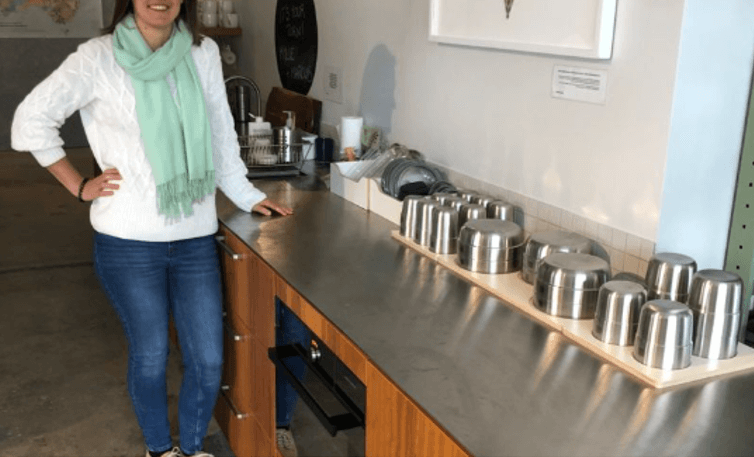
Giles Smith: When do you see this all coming to Sydney?
Jamie Forsyth: I'd love to go wide and fast, but I'm really loving the way Returnr marketplace is working. It's very, very small. There's only hundreds of users, but I'm bullish that it will be be big if I execute well, which is the challenge. Moving geographically is probably one of the biggest challenges. It would be at least 12 months before we get to Sydney. I know people are desperate to get it. We're still only really in a couple of areas of Melbourne.
Giles Smith: I appreciate you so much for, for your time today, Jamie.
Jamie Forsyth: Thank you.
To check out the Returner Marketplace, click here.
Top 3 Takeouts
- Implementing a new circular business model which requires customers to return some form of container to you for refill, inevitably means encouraging your customers to change their behaviour. That’s a tough thing to do, because as much as we’re in the age of sustainability becoming mainstream, change is almost always a tough sell.
If you are building in circularity – you’ve definitely go to make sure your brand messaging demonstrates compelling value, and you’ve also got to do everything in your power to make that change as painless as possible, otherwise you’ll risk the customer putting your brand in the too-hard basket.
- The second major take away was Jamie’s three key criteria for selection what to make re-usable & circular.
- Start with the highest cost packaging items, obviously where making them re-usable will most quickly stack up retained value in the supply chain.
- Next was the most environmentally tricky products, either because they are just plain bad for the environment, or possibly if they are complex and hard to recycled.
- Thirdly, and in many ways this is easy to overlook, but in terms of keeping people in inside the loop, I think may be the most important, and that is to look for ways to deliver a better experience through product design than the customer would get if using the single use option. If you can make life better with a re-usable alternative, customers will be more willing to take the little bit of inconvenience involved with the return part of the cycle.
Lastly of course we come to logistics. Its one of the toughest problems to solve simply because most of the traditional logistics businesses, Australia Post, Sendle, DHL you name it, work on a hub & spoke model where deliveries vehicles bounce from one hub to another, which makes it hard to get the return item back to your warehouse, and paying for every item to come back independently from the customer is a big ask when maintain your margin.
If you’re handing distribution within your own system, either directly or through a partner like in Returnr’s case, that’s perfect. Otherwise, looking at the behaviour patterns of your customers to locate & new hubs to consolidate the return items might be a viable solution.





